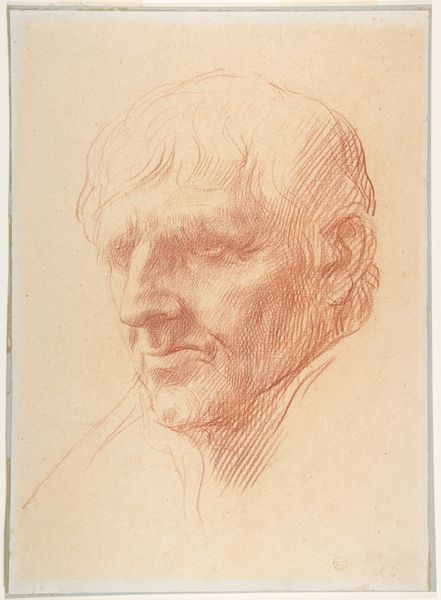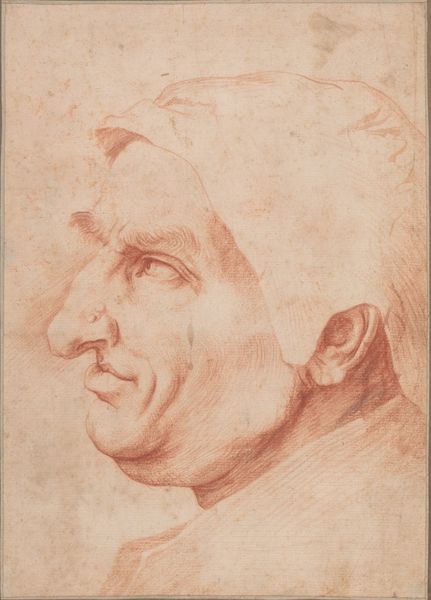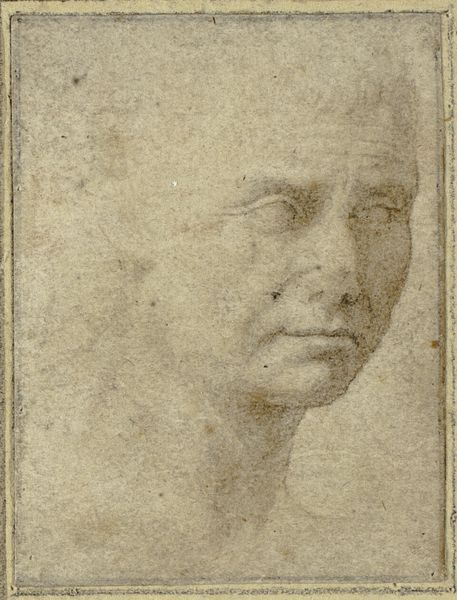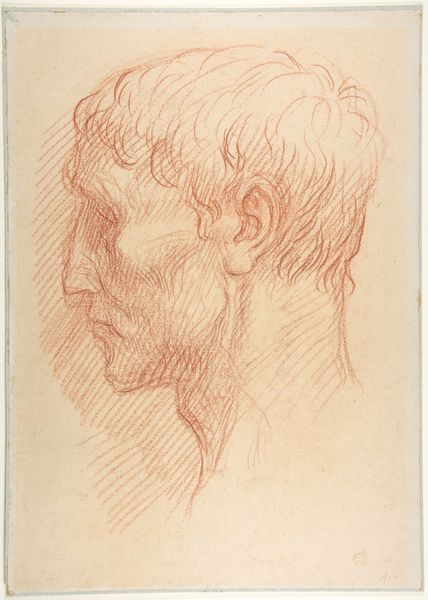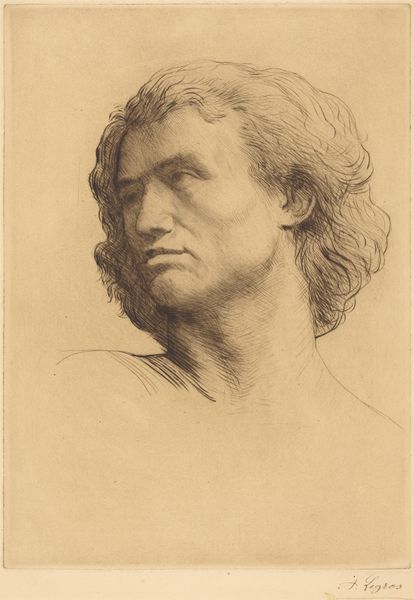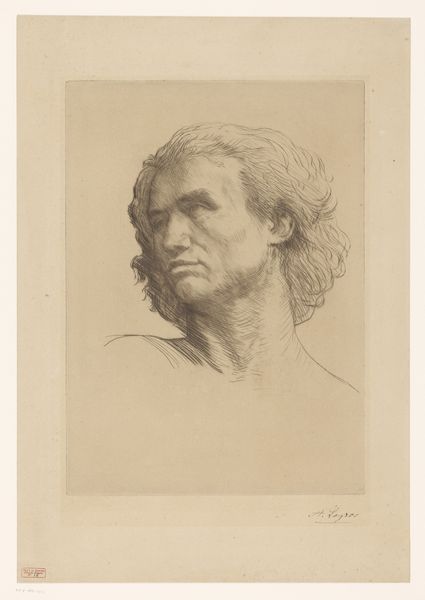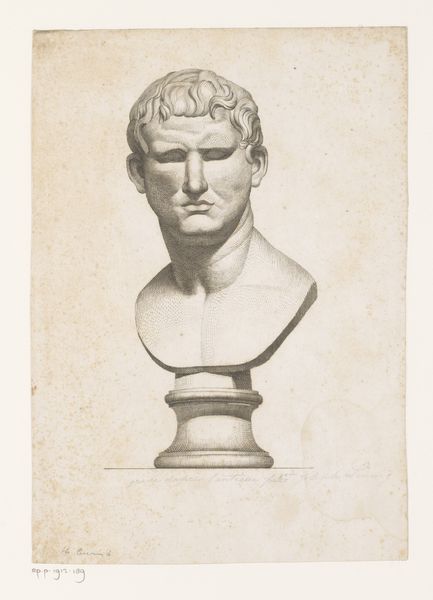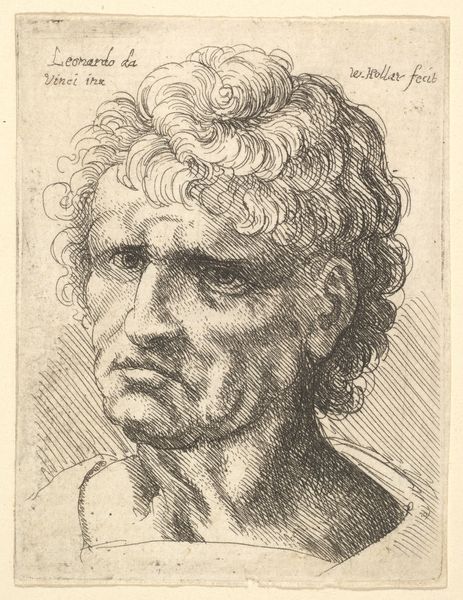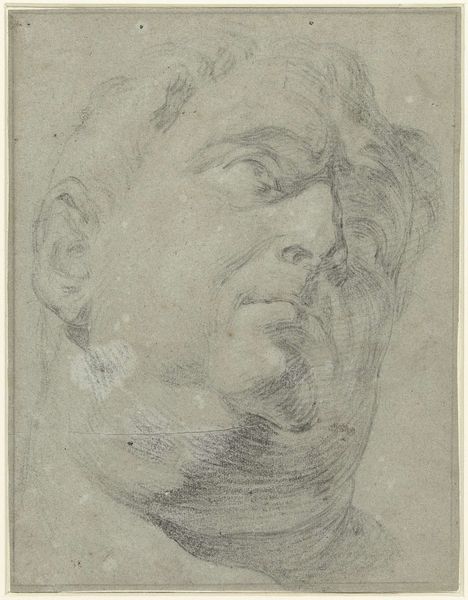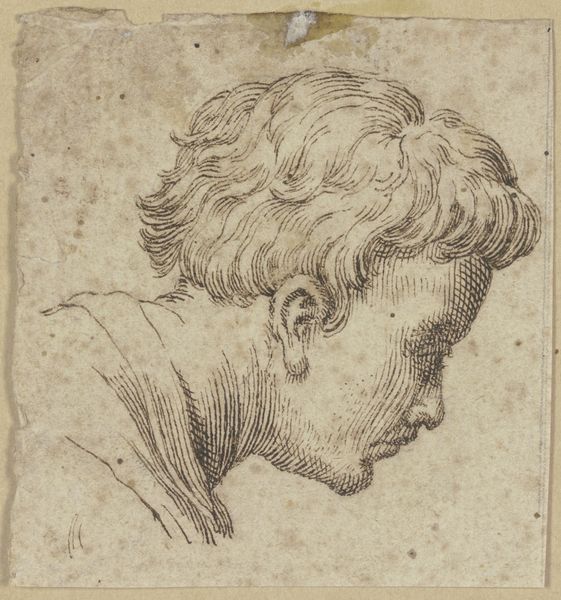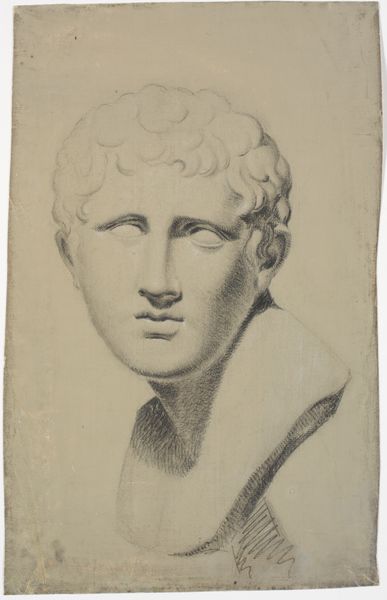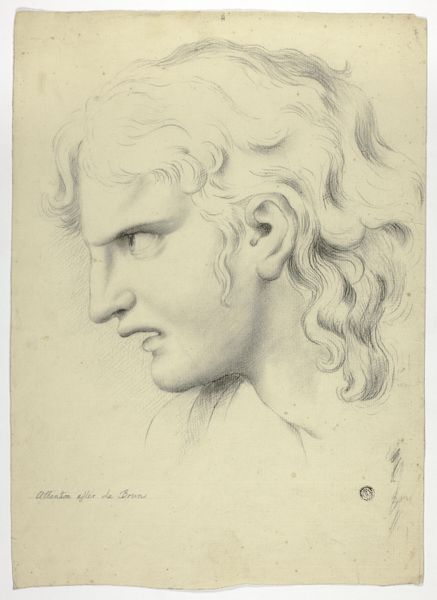
drawing, paper, chalk, charcoal
#
portrait
#
drawing
#
self-portrait
#
greek-and-roman-art
#
charcoal drawing
#
paper
#
ancient-mediterranean
#
chalk
#
portrait drawing
#
charcoal
#
portrait art
Dimensions: 293 × 193 mm
Copyright: Public Domain
Curator: Here we have what is known as "Ancient Portrait Bust of Vespasian" of unknown date and authorship. The artist used charcoal and chalk on paper to produce this compelling drawing. Editor: It’s striking how immediate this portrait feels. There's an intimacy despite the distance of time. The medium, that soft chalk, really lends itself to a vulnerability. The somewhat coarse materiality, combined with the sensitive modelling of the features, creates a striking balance. Curator: Absolutely. Let's think about the cultural context too. Vespasian, as Emperor, represented the height of Roman power, of course. A study like this, presumably preparatory, challenges our conceptions of the elite and artistic labor; was the goal faithful representation or a means to project controlled narratives about power? The material roughness further democratizes it. Editor: Agreed. Consider what it might have meant to create such an image given the strict societal hierarchies of the time, or of when it was created centuries later. This rendering invites a very intimate reflection on the humanity behind power and challenges traditional expectations about imperial portraiture. Who gets to represent power? How is power consumed, produced and viewed? Curator: It also brings into focus the mechanics of image-making itself, something easily lost when we consider the grand finished marbles, the bronzes, and mosaics usually associated with depictions of Roman leaders. Here, the labour and process behind these representations is laid bare by the artist’s focus on form and technique. It provides a connection to art production often obfuscated by the concept of 'high art'. Editor: Indeed. This isn’t just a passive representation; it engages actively with societal norms of its era by subverting traditional expectations of idealizing rulers and democratizes that perspective with accessibility of the materials. The sitter almost feels ordinary. Curator: A powerful piece—one that continues to spark essential questions. It encourages reflection on image creation, power dynamics, class and labour of production Editor: Absolutely, and a crucial lens through which to analyze ancient societies and legacies of representation today.
Comments
No comments
Be the first to comment and join the conversation on the ultimate creative platform.
